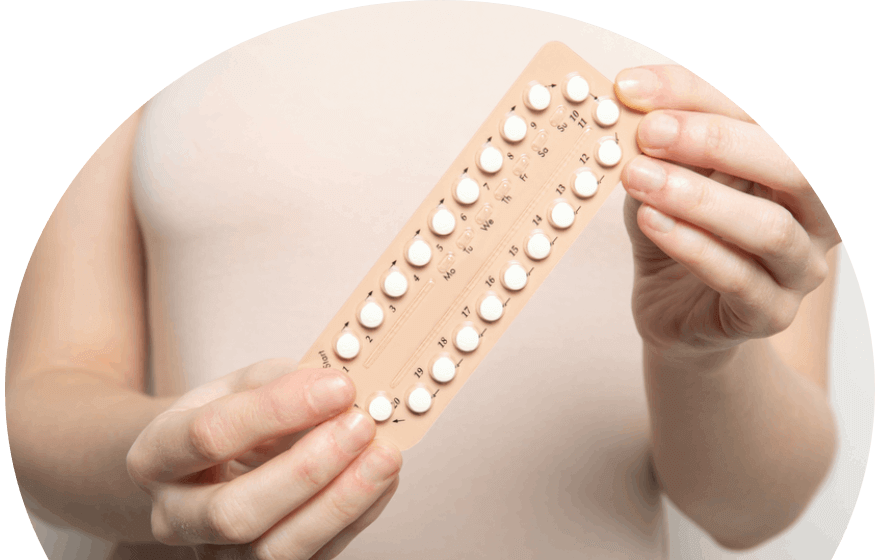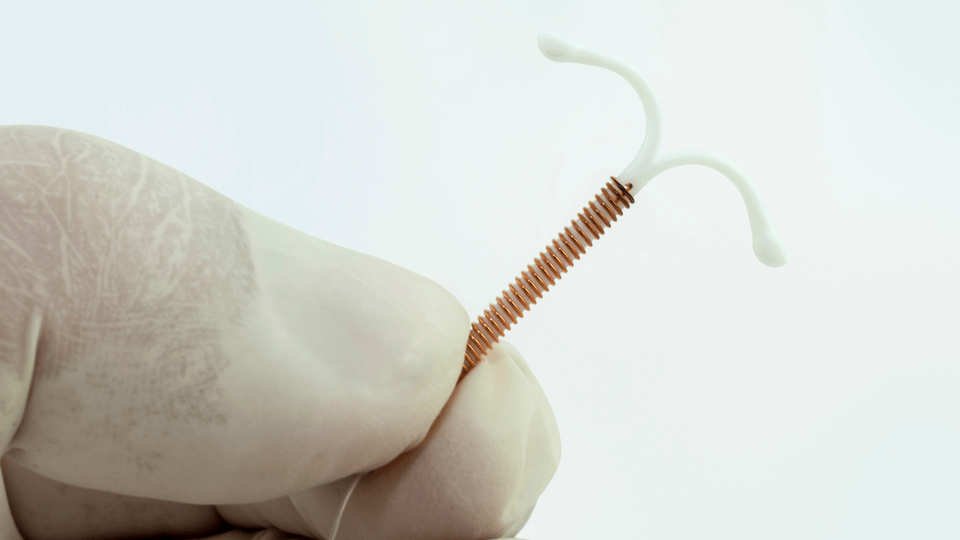Contraceptive Methods:
Birth Control Options for Women


When it comes to contraception (which is sometimes referred to as birth control), there are many different options available for women. From hormonal options, like contraceptive pills, patches and rings, to non-hormonal options, such as condoms and diaphragms. It can be overwhelming to choose the right one for your needs. Here, we’ll explore some of the most popular female contraceptive methods and help you make an informed decision.
Contraceptive Methods
There are four main types of female contraception:
- Hormonal contraceptives
- Barrier methods
- Long Acting Reversible Contraceptives
- Permanent methods.
Hormonal Contraceptive Methods
The most popular hormonal contraceptive method for women and people with a uterus is the contraceptive pill. There are 2 types of contraceptive pills:
1. Combined pill:
This contains synthetic versions of the hormones oestrogen and progesterone. They provide effective reversible contraception if taken correctly and have good cycle control.
Combined pills prevent pregnancy by preventing ovulation (the release of an egg) and by causing the mucus at the cervix (neck of the womb) to thicken, preventing sperm from entering the womb. They also work by thinning the lining of the womb, making it more difficult for a fertilised egg to implant.
2. Progesterone-only pill:
This pill only contains progesterone and is sometimes referred to as the “mini-pill”. If taken correctly it provides good contraceptive cover and has fewer associated risk factors than the combined pill. However, cycle control is often unpredictable.
Progesterone-only pills prevent pregnancy by causing the mucus at the cervix to thicken, preventing sperm from entering the womb to fertilise an egg. They can also thin the lining of the womb, making it more difficult for a fertilised egg to implant. Newer mini-pills also act on the ovaries to reduce the frequency of ovulation.
Another combined hormonal option is the birth control patch (contraceptive patch). This is a small adhesive square that’s placed on the skin and delivers hormones through the skin into the bloodstream. It’s effective for one week at a time and may be a good option if you have trouble remembering to take a pill every day.
Alternatively, you could try the vaginal ring. This is a small, flexible ring that is inserted into the vagina. It is a form of combined contraception, just like the birth control patch, and it provides a slow and steady release of oestrogen and progesterone into the bloodstream via the vaginal wall. Each ring remains in place for 3 weeks at a time and then it is removed for a hormone-free break. This is another excellent option if you find it difficult to take a pill every day.
Barrier Contraceptive Methods
Barrier methods of contraception do not contain hormones. These include male condoms, female condoms, dental dams and diaphragm/cervical caps, which act as a physical barrier to stop sperm from reaching the egg. These barrier methods need to be used every time you have sex for them to be effective.
Barrier methods are not as effective as hormonal contraceptives when it comes to preventing pregnancy, however, it is important to be aware that certain barrier methods (condoms and dental dams) can reduce your risk of acquiring sexually transmitted infections (STIs). Therefore, you will need to use condoms or a dental dam to protect yourself against possible STIs even if you are using another form of contraception.

Long-Acting Reversible Hormonal Contraceptives
There are several long-acting reversible contraceptives (LARCs) available for women and people with a uterus to choose from. These options all use hormones to provide reliable contraception.
1. The intrauterine system (IUS):
This is a type of contraceptive coil. It is a small plastic T-shaped device that is inserted into the uterus by a trained doctor or nurse. The IUS releases a synthetic form of progesterone locally and usually has little systemic effect.
The IUS can provide effective contraception for 3-8 years, depending on the type of device.
2. The contraceptive implant:
This is a small, flexible rod that is inserted under the skin of the upper arm by a trained doctor or nurse. It releases progesterone into the bloodstream slowly and steadily triggering changes that reduce the risk of pregnancy. It is effective for 3 years, after which time it should be removed/ replaced.
3. The contraceptive injection:
This is another long-term hormonal contraceptive that prevents pregnancy. This is given every 12 weeks by a trained healthcare professional These are highly effective methods of contraception and they’re ideal for anyone who doesn’t want to worry about daily or weekly contraception.
Long-Acting Non-Hormonal Contraceptive Methods
The Intrauterine Device (IUD) or copper coil is another form of long-acting contraception. It does not contain any hormones. This is a small T-shaped plastic frame with a copper wire (coil) attached. This is inserted into the womb and it can remain there for up to 5-10 years, depending on the type that is fitted. The copper coil needs to be inserted and removed by a doctor and it is over 99% effective. It works by preventing sperm from reaching and combining with an egg. It also works by preventing a fertilised egg from settling in the womb and therefore, it can be used as a form of emergency contraception.
Permanent Methods of Contraception
Permanent forms of contraception for women, also known as sterilisation, are a reliable and effective way to prevent pregnancy. There are two main types of permanent contraception for women: tubal occlusion and salpingectomy. Both work by preventing sperm from travelling down the fallopian tubes which link the ovaries to the uterus. This means that the egg cannot meet the sperm, and so, fertilisation cannot happen. The ovaries will still release eggs, but they will be absorbed naturally into the body.
Tubal Occlusion
Tubal occlusion is a procedure where a surgeon blocks the fallopian tubes by applying plastic or titanium clips over the fallopian tubes. Alternatively, the surgeon may pill a small loop of the fallopian tube through a silicone ring and clamp it shut, or they may tie, cut or remove a small piece of the fallopian tube.
To do this, the surgeon makes a small incision near the belly button (known as a laparoscopy) or just above the public hairline (known as a mini-laparoscopy). A very small tool with a light and camera (a laparoscope) is then used to see your fallopian tubes. This operation is done under general anaesthetic so you would be asleep. However, most women are able to return home the same day.
Here, you can find more information on tubal occlusion, along with all of the other methods of contraception that we have discussed above.
Salpingectomy
The other type of permanent contraception is known as salpingectomy. This is where the fallopian tubes are completely removed. This is generally done when blocking the fallopian tubes hasn’t worked.
While permanent contraception is a major decision and not appropriate for everyone, it can be a good option for women who are sure they do not want to have children in the future. It is important to note that permanent contraception does not protect against sexually transmitted infections (STIs), so it is still important to use condoms or other barrier methods of protection to prevent the spread of STIs.
Additionally, while sterilisation is considered permanent, there is still a small chance of pregnancy in rare cases.
Women who are considering permanent contraception should discuss their options with a healthcare provider and carefully weigh the benefits and risks before making a decision.
Repeat Prescription
Contraceptive Pill, Patch & Ring
Request a prescription for Contraceptive Pills, Patches or Rings online with Webdoctor.ie! Once your request has been approved, we can send your prescription directly to your chosen pharmacy via secure Healthmail.
Where Can I Get a Prescription for The Contraceptive Pill, Patch or Ring?
You can easily request a prescription for contraception via Webdoctor.ie’s online prescription service. Through this service, you can request prescriptions for over 20 different types of contraceptive pills, patches and rings. To request a prescription, you just need to fill in a short and secure questionnaire. Then, one of our Irish-registered doctors will review your request to make sure it is safe and suitable for you. Once approved, we’ll send your prescription to a pharmacy of your choice.
There’s no need to make an appointment with a GP unless it is your first time seeking a prescription for contraception. If this is the case, you can book an online video consultation with one of our experienced GPs. There, we can help you find the right form of contraception for your body and your needs!
How It Works
Through an online medical questionnaire, face-to-face video consultation or home health test, our online doctors will review your case and prescribe the best treatment for you.

Step 1
Online Questionnaire

Step 2
Medical Review
